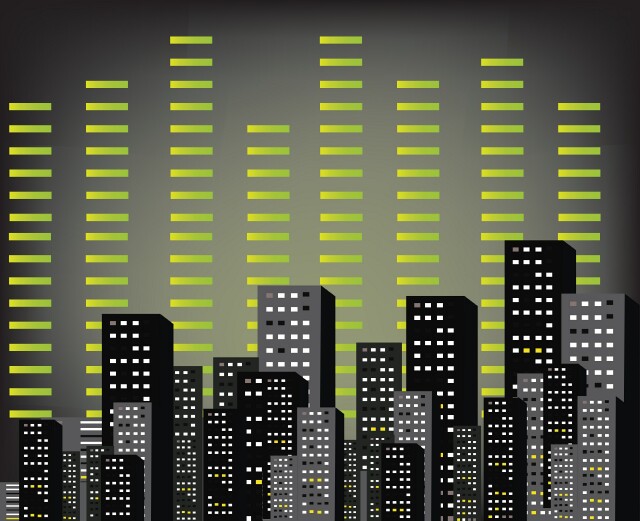Unexpected Ways the Web Could Change Our Cities

Social media over the past decade has transformed the online world. Today, innovation in media is beginning to tilt away from online toward digitally enabled physical places and experiences, moving many online applications into a new context. What’s driving this new web-enabled reality? The speedy, networked rollout of an estimated 1.5 million digital out-of-home (DOOH) displays in the U.S. is creating a new platform for online experiences previously relegated to laptops and mobile phones.
This network is generating an audience reach that is the envy of many a homepage. But it isn’t just about numbers. The proliferation of DOOH displays is creating the ability to communicate with smaller, more targeted clusters of audiences. Not the one-to-one of the web, but instead the coveted one-to-a-hard-to-reach-meaningful-few. Advances in ad tech and an audience-first approach, again borrowed from online publishers, means that serving ads based on external conditions and first- and third-party data sets is fast becoming the norm.
The classic content and context of the web are moving to the physical world via connected displays. Short-form content, like Snaps and shared photos, seem designed not just for mobile devices but also for DOOH displays. As DOOH increasingly becomes both a foundation and an enabler of our future cities -- offering a new model for connectivity, consumer engagement and revenue generation -- real-life and social utility are creating new contexts that situate ads as part of our daily life.
And just like cookies gave us a way to understand online behaviors, location services -- when used responsibly -- can begin to identify patterns that create anonymized, aggregated, cookie-like data in the physical world. This re-contextualization of location will enable us to build audience segments that are perhaps even richer than those based on traditional demographics and web visits.
Proximity to retail is also growing in importance for the industry. A DOOH display can be the last marketing message that a consumer sees before crossing the threshold of a store, mimicking the place of search in online retail within the physical world. More effective targeting based on location and audience could also replicate the relevance of keywords.
So, if the next decade of innovation will indeed take place in physical spaces, what are the must-haves that out-of-home should borrow from the web, and what should be left behind?
What to Borrow
- The Best of Social
With similarities in creative format and a shared obsession for location, DOOH displays could very well come to reflect back a sense of community and events in real-time. Might this become the way that we see the world? - Format Celebrities
Vine made stars of people overnight, and many of them built their audiences from the ground up. How could the ready-made audiences of OOH and a smart understanding and use of content make stars in the streets? - Memes
Seriously, where are all the cats?
What to Leave Behind
- Fraud
Until we reach the singularity, when armies of robots share our subway rides home, we can be reasonably confident that humans, not networks of bots, are the backbone of our impressions. - Paywalls
As online publishers attempt to wrestle back revenues and shift the paradigm back to paid content models, could DOOH provide the headlines that drive people to subscribe? - Trolls
The logistics of getting our opinionated and pedantic brothers and sisters to stand next to DOOH displays and tell us exactly what they think of a particular creative or piece of content may prove too much for trolls in the physical world.
By stealing the best of the web and leaving some of it behind, DOOH could be the answer to the heads-down smartphone zombie epidemic, bringing us back to a more beautiful, connected and heads-up urban experience around us.
The opinions and points of view expressed in this commentary are exclusively the views of the author and do not necessarily represent the views of MediaVillage.com/MyersBizNet management or associated bloggers.


